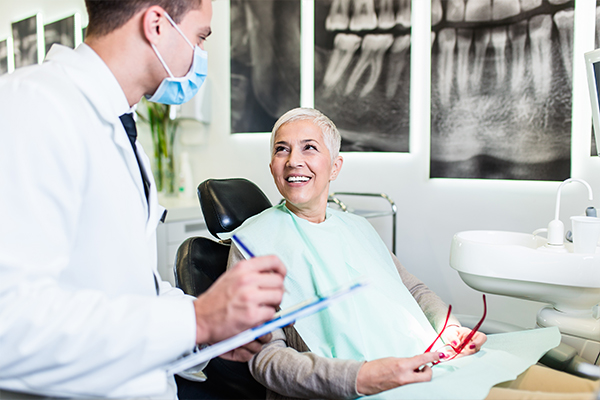Guided tissue regeneration (GTR) is a transformative approach in periodontal surgery, offering a structured method to restore lost bone and soft tissues caused by advanced gum disease. This technique has become a cornerstone of successful periodontal repair and is often used alongside procedures like gum grafting to maximize outcomes.
This article delves into the science behind GTR, its applications, and its benefits for long-term oral health.
What Is Guided Tissue Regeneration?
Guided tissue regeneration is a surgical procedure designed to stimulate the growth of lost bone and gum tissue. It uses specialized biocompatible membranes as barriers to protect and promote the healing of the bone and periodontal ligament.
This method enables the regeneration of periodontal structures by preventing fast-growing gum tissue from occupying space meant for slower-growing bone and ligament cells.
When Is Guided Tissue Regeneration Used?
GTR is commonly employed in cases where periodontal disease has caused significant tissue loss. Specific applications include:
- Treating Periodontal Pockets:
Deep pockets between the teeth and gums caused by bone loss can be repaired with GTR to restore periodontal health. - Bone Defects Around Teeth:
GTR is effective for addressing localized bone loss due to periodontitis, ensuring long-term tooth stability. - During Gum Grafting Procedures:
It can be combined with grafting to enhance soft tissue repair. - In Preparation for Dental Implants:
GTR may also be used to regenerate bone in areas where future implants are planned.
The Guided Tissue Regeneration Procedure
Step 1: Diagnosis and Planning
The dentist evaluates the extent of bone and tissue loss through clinical examination and imaging, such as X-rays or CBCT scans, to determine the feasibility of GTR.
Step 2: Flap Surgery
The surgical procedure begins with the creation of a gum flap to expose the damaged bone and periodontal structures.
Step 3: Placement of Barrier Membrane
A biocompatible membrane is placed over the defect to prevent gum tissue from encroaching into the area. This membrane creates a conducive environment for bone and ligament cells to regenerate.
Step 4: Bone Grafting (Optional)
In cases with significant bone loss, a grafting material may be used alongside GTR to enhance bone regrowth.
Step 5: Closure and Healing
The gum flap is sutured back into place, and the site is left to heal over several months, during which tissue regeneration occurs.
Advantages of Guided Tissue Regeneration
- Effective Periodontal Repair
GTR allows for the targeted regrowth of bone and ligament tissue, improving the stability and health of affected teeth. - Prevents Tooth Loss
By addressing tissue loss, GTR significantly reduces the risk of tooth mobility and eventual loss. - Minimally Invasive Solution
The use of membranes and precise techniques minimizes the need for extensive surgical interventions. - Improves Implant Success Rates
For patients planning to undergo dental implant placement, GTR can regenerate sufficient bone to support the implants. - Long-Term Oral Health
Restoring periodontal structures improves gum health and reduces the risk of recurring periodontal disease.
Guided Tissue Regeneration vs. Gum Grafting
While GTR focuses on regenerating bone and ligament tissue, gum grafting primarily addresses soft tissue deficiencies, such as gum recession. These two procedures often complement each other, with GTR enhancing the success of gum grafting by improving the foundation of the surrounding tissues.
Post-Operative Care
Proper aftercare is essential for successful GTR outcomes:
- Oral Hygiene: Avoid brushing or flossing near the surgical site until cleared by the dentist.
- Dietary Restrictions: Stick to a soft diet to prevent trauma to the area.
- Follow-Up Visits: Regular check-ups are crucial to monitor healing progress.
- Antibiotics or Antimicrobial Rinses: These may be prescribed to minimize infection risk.
Advancements in Guided Tissue Regeneration
Recent developments in materials and techniques have enhanced the effectiveness of GTR. Innovations include:
- Bioactive Membranes: These membranes are designed to stimulate tissue growth actively.
- Growth Factors and Proteins: Additives like enamel matrix proteins or platelet-rich fibrin (PRF) improve healing outcomes.
- 3D-Printed Scaffolds: These customized barriers precisely fit the patient’s unique bone defects.
Guided tissue regeneration represents a significant advancement in periodontal surgery, offering a reliable method for restoring lost bone and ligament tissue. Its role in periodontal repair and synergy with procedures like gum grafting make it a cornerstone of modern dental care.
For patients with advanced gum disease or those preparing for dental implants, GTR provides a pathway to improved oral health and long-term stability.

